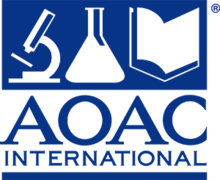
Harvey Washington Wiley was an American chemist who advocated successfully for the passage of the landmark Pure Food and Drug Act of 1906 and subsequently worked at the Good Housekeeping Institute laboratories. He was the first commissioner of the United States Food and Drug Administration.

Hazard analysis and critical control points, or HACCP, is a systematic preventive approach to food safety from biological, chemical, and physical hazards in production processes that can cause the finished product to be unsafe and designs measures to reduce these risks to a safe level. In this manner, HACCP attempts to avoid hazards rather than attempting to inspect finished products for the effects of those hazards. The HACCP system can be used at all stages of a food chain, from food production and preparation processes including packaging, distribution, etc. The Food and Drug Administration (FDA) and the United States Department of Agriculture (USDA) require mandatory HACCP programs for juice and meat as an effective approach to food safety and protecting public health. Meat HACCP systems are regulated by the USDA, while seafood and juice are regulated by the FDA. All other food companies in the United States that are required to register with the FDA under the Public Health Security and Bioterrorism Preparedness and Response Act of 2002, as well as firms outside the US that export food to the US, are transitioning to mandatory hazard analysis and risk-based preventive controls (HARPC) plans.

Melamine is an organic compound with the formula C3H6N6. This white solid is a trimer of cyanamide, with a 1,3,5-triazine skeleton. Like cyanamide, it contains 67% nitrogen by mass, and its derivatives have fire retardant properties due to its release of nitrogen gas when burned or charred. Melamine can be combined with formaldehyde and other agents to produce melamine resins. Such resins are characteristically durable thermosetting plastic used in high pressure decorative laminates such as Formica, melamine dinnerware including cooking utensils, plates, plastic products, laminate flooring, and dry erase boards. Melamine foam is used as insulation, soundproofing material and in polymeric cleaning products, such as Magic Eraser.
In software project management, software testing, and software engineering, verification and validation (V&V) is the process of checking that a software system meets specifications and requirements so that it fulfills its intended purpose. It may also be referred to as software quality control. It is normally the responsibility of software testers as part of the software development lifecycle. In simple terms, software verification is: "Assuming we should build X, does our software achieve its goals without any bugs or gaps?" On the other hand, software validation is: "Was X what we should have built? Does X meet the high-level requirements?"
An electronic lab notebook is a computer program designed to replace paper laboratory notebooks. Lab notebooks in general are used by scientists, engineers, and technicians to document research, experiments, and procedures performed in a laboratory. A lab notebook is often maintained to be a legal document and may be used in a court of law as evidence. Similar to an inventor's notebook, the lab notebook is also often referred to in patent prosecution and intellectual property litigation.
The Radiological and Environmental Sciences Laboratory (RESL) is a government-owned and government-operated laboratory operated by the U.S. Department of Energy Idaho Operations Office. It reports directly to the DOE-ID Assistant Manager for Technical Programs and Operations, and is located at the IRC in Idaho Falls, Idaho. RESL and its predecessor organizations have been part of the DOE-ID since 1949.
Validation is the process of establishing documentary evidence demonstrating that a procedure, process, or activity carried out in testing and then production maintains the desired level of compliance at all stages. In the pharmaceutical industry, it is very important that in addition to final testing and compliance of products, it is also assured that the process will consistently produce the expected results. The desired results are established in terms of specifications for outcome of the process. Qualification of systems and equipment is therefore a part of the process of validation. Validation is a requirement of food, drug and pharmaceutical regulating agencies such as the US FDA and their good manufacturing practices guidelines. Since a wide variety of procedures, processes, and activities need to be validated, the field of validation is divided into a number of subsections including the following:

LGC Group, formerly the Laboratory of the Government Chemist, is an international life sciences measurement and tools company. It provides the role and duties of the UK Government Chemist, a statutory role and adviser to the government. LGC also hosts the UK's National Measurement Laboratory (NML) for chemical and bio-measurement, which performs measurements for diagnostics, advanced therapeutics, safety and security, among others.

The American Oil Chemists' Society (AOCS) is an international professional organization based in Urbana, Illinois dedicated to providing the support network for those involved with the science and technology related to fats, oils, surfactants, and other related materials.
In China, the adulteration and contamination of several food and feed ingredients with inexpensive melamine and other compounds, such as cyanuric acid, ammeline and ammelide, are common practice. These adulterants can be used to inflate the apparent protein content of products, so that inexpensive ingredients can pass for more expensive, concentrated proteins. Melamine by itself has not been thought to be very toxic to animals or humans except possibly in very high concentrations, but the combination of melamine and cyanuric acid has been implicated in kidney failure. Reports that cyanuric acid may be an independently and potentially widely used adulterant in China have heightened concerns for both animal and human health.
Verification and validation are independent procedures that are used together for checking that a product, service, or system meets requirements and specifications and that it fulfills its intended purpose. These are critical components of a quality management system such as ISO 9000. The words "verification" and "validation" are sometimes preceded with "independent", indicating that the verification and validation is to be performed by a disinterested third party. "Integration verification and validation" can be abbreviated as "IV&V".
The Gerber method is a primary and historic chemical test to determine the fat content of substances, most commonly milk and cream. The Gerber method is the primary testing method in Europe and much of the world. The fairly similar Babcock test is used primarily in the United States, although the Gerber method also enjoys significant use in the U.S. as well.

Asthma & Allergy Friendly is a registered certification mark operated by Allergy Standards Limited in association with not-for-profit asthma and/or allergy organizations. They specialise in labelling products which have been put through and have passed standardised testing. The Asthma & Allergy Friendly Certification Program was created to scientifically test and identify consumer products that are more suitable for people with asthma and allergies.
Reading Scientific Services Ltd. (RSSL) is a British company providing scientific analysis, consultancy, product development and training to the global food, drink, healthcare, pharmaceutical, biopharmaceutical and consumer goods sectors. It has been inspected by regulatory authorities including the U.S. Food and Drug Administration, the Medicines and Healthcare products Regulatory Agency and the United Kingdom Accreditation Service.

NSF is a product testing, inspection, certification organization with headquarters in Ann Arbor, Michigan. NSF also offers consulting and training services worldwide.
The Institute for Food Safety and Health (IFSH) is a research consortium consisting of the United States Food and Drug Administration's Center for Food Safety and Applied Nutrition, Illinois Institute of Technology (IIT) and the food industry. Under the cooperative agreement, the Institute was established by IIT to bring together the food safety and technology expertise of academia, industry and government as a consortium in the common goal of enhancing and improving the safety of food for U.S. consumers.

The International Seed Testing Association (ISTA) is an independent, non-profit organization founded during the 4th International Seed Testing Congress in 1924. Its members work to promote uniform methods of evaluating seeds being sold internationally to facilitate the international trading of seeds and to contribute to global food security. ISTA is involved in the development of internationally approved ISTA Rules for sampling and testing seed quality, laboratory accreditation and the promotion of seed science research and test development.
Isotopic analysis by nuclear magnetic resonance allows the user to quantify with great precision the differences of isotopic contents on each site of a molecule and thus to measure the specific natural isotope fractionation for each site of this molecule. The SNIF-NMR analytical method was developed to detect the (over) sugaring of wine and enrichment of grape musts, and is mainly used to check the authenticity of foodstuffs and to control the naturality of some aromatic molecules. The SNIF-NMR method has been adopted by the International Organisation of Vine and Wine (OIV) and the European Union as an official method for wine analysis. It is also an official method adopted by the Association Of Analytical Chemists (AOAC) for analysis of fruit juices, maple syrup, vanillin, and by the European Committee for Standardization (CEN) for vinegar.
The Food Chemicals Codex (FCC) is a collection of internationally recognized standards for the purity and identity of food ingredients.
A certificate of analysis (COA) is a formal laboratory-prepared document that details the results of one or more laboratory analyses, signed—manually or electronically—by an authorized representative of the entity conducting the analyses. This document gives assurances to the recipient that the analyzed item is what it is designated to be, or has the features advertised by the producer. The design and content of a COA may be based upon a set of requirements identified by the lab, by regulatory-driven requirements, and/or by standards developed by standard developing organizations. The COA is used in a wide variety of industries, including but not limited to the agriculture, chemical, clinical research, food and beverage, and pharmaceutical industries.








